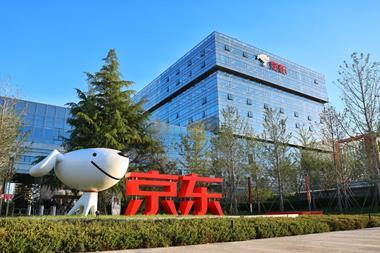Young’s Seafood must tackle questions over cost efficiencies if it is to make the most of the Cumbrian Seafood acquisition, says Richard Ford
When news broke in October that seafood supplier Cumbrian Seafood had appointed KPMG to “explore” its options, industry experts were quick to dismiss a swoop by Young’s, citing its existing overcapacity.
Such perceived logic was to prove academic, however, as Young’s ultimate owner, Lion Capital, announced on Monday that it had purchased Cumbrian Seafood and sister company Border Laird immediately after they had been placed into administration on the same day, and hived the two companies off into a new subsidiary called Ocean Pure. As Pete Ward, COO at Young’s Seafood, puts it: “The asset was available and so the asset was purchased.”
But with three additional sites now on its books, where now for Lion’s UK seafood interests? And is Cumbrian the final piece in the jigsaw to get Young’s back on track?
It was certainly a surprising transaction for a company that’s been looking to dispose of non-performing seafood assets. Yet initial reaction from the industry appears positive. It had been over six weeks since Cumbrian - which supplies Tesco, Morrisons and Asda - announced it had appointed KPMG after being approached by several parties wishing to invest in or buy the business. Lion’s move has addressed that uncertainty, says Seafish operations director Jon Harman: “The stability it will bring to the market will be beneficial.”
His views are echoed by one retail seafood buyer. “Cumbrian was very vulnerable. From our side it gives us security going through a key period such as Christmas.”
But while the deal may satisfy the industry’s desire for greater short-term stability, the devil is in the detail. The way in which the acquisition has been structured, by placing Cumbrian into Ocean Pure - begs a number of questions, says one retailer source. “Going forward, it would have been easier to consolidate it as one company.” In ‘easier’ read ‘more cost-efficient’ - retailers will inevitably want their pound of flesh.
Ward says it’s too early to say if Cumbrian will be integrated into Young’s or continue as a separate entity. This week had been about “getting customers on board and letting employees know where they stand” but Ward says Lion needs to consider a long-term sustainable solution for the two “credibly complementary” businesses. While he admits there is no masterplan, he believes there is crossover in several categories. “We have duplicated processing availability and we have lots of sites,” adding it’s “likely that products will move around”.
Young’s is confident the deal does not raise any competition concerns. “We do not believe so, and have had discussions with all major customers,” says a spokeswoman. And at this stage, retailers seem satisfied.
“There are still other options [for buying fish], which is good,” says the retailer source. Although the greater efficiencies brought by the deal is unlikely to bring seafood prices down, it will hopefully mean they don’t go up any more, he adds.
The last few years have not been kind to Young’s. But a new dawn may be breaking. After posting a £6.3m pre-tax loss for the 15-month period to 31 December 2009, announcing a raft of redundancies at its Humberstone Road site in Grimsby this year, and consulting on the closure of its Cromer Crab Company site in Norfolk, with the potential loss of 230 jobs, last week, Young’s announced a £7.4m pre-tax profit in the year to 31 December 2010.
And the launch of a 12-strong frozen seafood range, Jamie Oliver by Young’s, is performing well, according to sources.
And whether or not Ocean Pure is swallowed up by Young’s, Lion has effectively killed off a major competitor and potentially consolidated the market.
Source
Richard Ford



















No comments yet